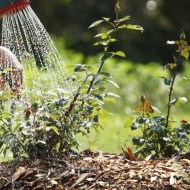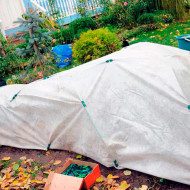Secrets of Successfully Growing Miss Piggy's Hybrid Tea Rose
Content
Miss Piggy's rose story
Miss Piggy is a new generation hybrid tea rose. The variety was bred by Dutch breeders in 2010. After the official presentation, the decorative culture was awarded the highest award in the category "Best New Variety".
The name Miss Piggy rose was given in honor of one of the main characters of the puppet series The Muppet Show. We are talking about a pretty pig who loved to dress up in beautiful outfits.
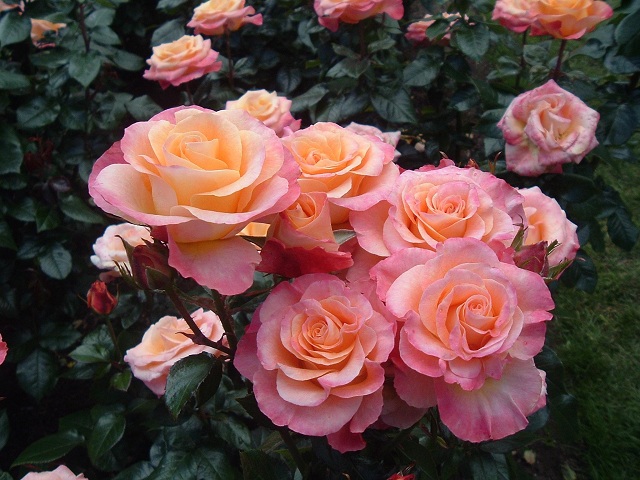
Characteristics and description of the flower
Miss Piggy's hybrid tea rose is prized for its decorative qualities. The height of the bush varies from 60 to 150 cm. Shoots are elastic, erect, moderately studded. The leaves have a traditional shape. The outer surface of the leaf plate is leathery, dark green in color.
The variety is characterized by large double buds. The average number of petals is about 40. The diameter of the opened bud reaches 12 cm. The color of the bud is pale pink, but closer to the middle, the petals become a pink-peach shade. During flowering, which lasts all summer, Miss Piggy emits a pleasant and unobtrusive scent.
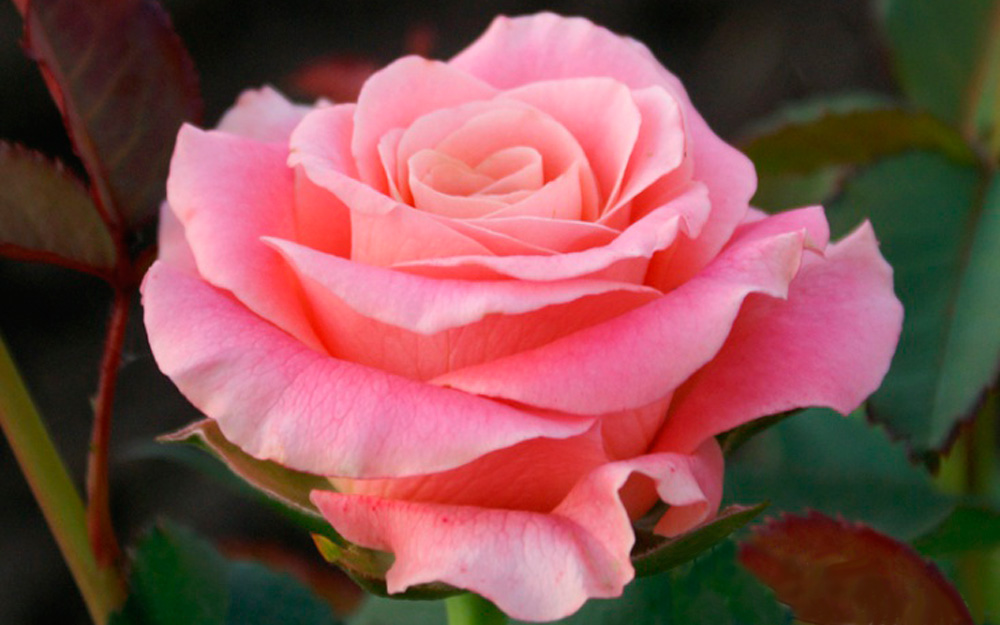
Advantages and disadvantages of the variety
- high decorativeness;
- long flowering period;
- resistance to invasions of harmful insects;
- excellent winter hardiness;
- universal application;
- long-term preservation of the decorative appearance in the cut state.
- high requirements for the growing environment and care;
- low resistance to powdery mildew and black spot.
Video "Planting hybrid tea roses"
In this video, experts tell you how to plant a flower in open ground in early spring.
Features of planting and growing
Many novice growers are interested in how to plant and grow a Miss Piggy rose in the country. Let's figure it out.
Site and soil requirements
For active and abundant flowering, decorative culture needs sunlight. Therefore, roses are planted in areas open to the sun. However, the area must be protected from wind, draft and cold.
As for the growing environment, the flower loves moist, well-drained and slightly acidic soil. If the level of soil acidity is too high, liming of the site can be carried out.
Landing algorithm
The optimal landing time for Miss Piggy is mid-May. The planting hole, the size of which should be 2–2.5 times the root system of the seedling, is prepared in advance.
The bottom of the pit is laid out with pieces of red brick or expanded clay. Then a layer of nutritious soil is laid: manure, fertile soil, river sand and peat (3: 2: 2: 1). Before planting, the root of the seedling is soaked in a solution of the growth biostimulator "Kornevin" or "Epin". The plant is buried in such a way that the root collar is underground.The distance from the surface of the earth to the root collar is about 5 cm.
At the end of planting, the seedling of an ornamental horticultural culture is abundantly spud with peat, dry fallen leaves, hay or straw. The shoots protruding above the surface of the covering hill are cut off.
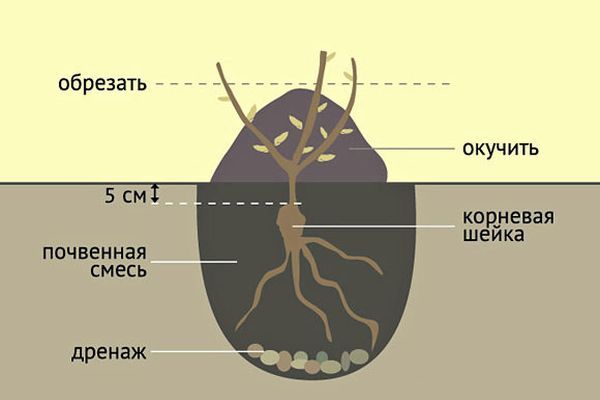
Watering and fertilizing
Water Miss Piggy's rose 2 times a week or as needed. With frequent precipitation, it is necessary to moisten the soil under the ornamental shrub as the top layer of the soil dries out. Since excess moisture in the soil leads to rotting of the root system, the plant should not be waterlogged.
The duration and intensity of flowering is influenced by the amount of useful and nutrient substances in the soil. In the spring, the rose is fed with nitrogen-containing fertilizers: urea, ammonium nitrate, nitroammophos and azofos. Top dressing with nitrogen contributes to the active growth of green mass.
Potassium-phosphorus dressings will help to enhance the profusion of flowering and increase the intensity of the color of the bud. To fertilize Miss Piggy's hybrid tea rose, superphosphate, ammophos, potassium sulfate, potassium sulfate or potassium chloride are used.
Before adding fertilizers to the soil, the soil is abundantly moistened. If you perform "dry" root dressing, you may burn the plant's rhizomes.
Preparation for wintering
At the end of flowering, the plant is cut off. The cut shoots are sprinkled with a layer of peat and river sand. Then the rose is insulated with fir branches or spruce branches.
To prevent Miss Piggy from suffering from temperature fluctuations, spunbond non-woven covering material can be used. This shelter protects the plant from wind and cold, but does not interfere with air circulation.
- You need to water the flower as the soil dries
- Roses are fed with mineral or organic fertilizers
- For the winter, decorative culture is covered with spunbond
Gardeners reviews
“Upon retirement, I spend a lot of time at my dacha, improving and landscaping the territory. Planted a Miss Piggy rose sapling two years ago. The plant quickly adapted and went into active growth. If the irrigation regime is observed and fertilization is applied, it blooms actively and abundantly. "
“Unfortunately, our beauty, Miss Piggy's hybrid tea rose, did not survive this winter. I decided to cover the flower with polyethylene for the winter. The dense, airtight material has caused condensation to form. The rose is moldy and rotten. "
The Miss Piggy hybrid tea rose is actively used by landscape designers for decoration and landscaping of personal plots and city squares. Also, an exquisite flower is used in floristry to compose interesting flower arrangements.

